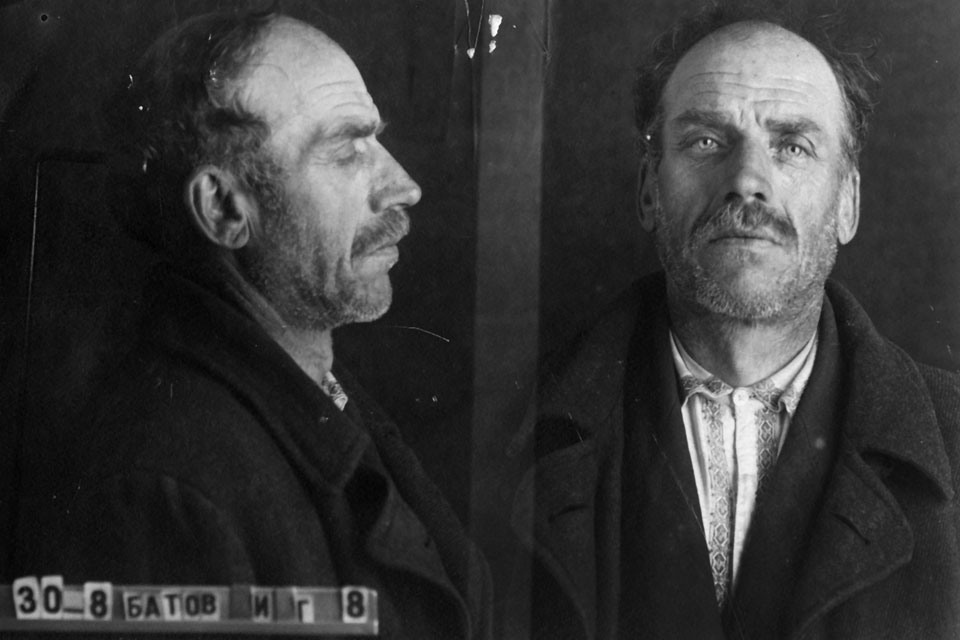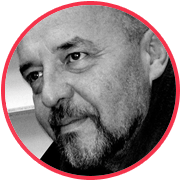
Oleg Klimov on How the Power is Trying to Forbid Us from Seeing the Truth

His works have been exhibited in Belgium, Great Britain, Germany, the Netherlands, Russia and the USA. In 1990 was awarded the all-Soviet prize “The King or Reportage.” Is the author of documentary photobooks on Russia, the Soviet Union, and the war in Kosovo. In 2004 released a the book Heritage of the Empire, My Doomed Motherland on the consequences of the collapse of the Soviet Union. It was published in the Netherlands, Belgium, Germany and France.
A couple of weeks ago the plenum of the Russian Supreme Court issued сits legislative verdict as to the right to produce and publish images of citizens of the Russian Federation.
In this situation one can’t help thinking about the learned minds, scholars of the Quran, who judged artists for attempts to create a visual image of man or animal because by doing so they assumed the role of the supreme being. In Islam one is severely punished for this, after one’s death. The Supreme Court prefers not to put the penalty too far off: one is in for up to six years in prison for breaking the principle of Inviolability of Private Life (Article 137 of the Penal Code of the Russian Federation).
So now every photographed citizen has to give his explicit consent not just to be photographed but for the photograph to be published. Please note: we are not talking about the photographer’s rights of the image because from now on any photograph, as a visual image of a citizen, belongs only to the person depicted in the photograph and not to the creator of the image. If the photographer didn’t ask for such a permission and the subject did not sign a model release, the photographer’s actions may be qualitied as “stealth of a personal image.” Those rules, however, don’t count for images created by workers of secret services for the large-scale state photo project “Wanted By the Police.” Let’s try to see just how much all this makes sense.
{“img”: “/wp-content/uploads/2015/06/nkvd_01.jpg”, “text”: “People photographed by NKVD employees prior to execution by shooting in Moscow and Moscow region (Boutovo). Materials from the museum and public center named after Andrey Sakharov, Moscow.”}
By the right of its nature, an image is not a depiction of a given physical person, and thus, as such, it cannot belong to them.
It is known that street photographers, for example, don’t take pictures of specific people. As a rule, those people get into a picture by chance and form a certain visual image together with any number of unrepeatable attributes. In other works, that visual image is unique and, accordingly, its authorship belongs entirely to the photographer who created it.
But from the Supreme Court’s point of view an image may be positive as well as negative. For the private people in the picture as well as for the state as a whole. In this case interests of the state do coincide with those of a private person, which allows the Supreme Court to imitate the defence of a person’s right for private life in its ruling.
The state may classify a citizen’s actions, but not his image.
Any citizen walking in the street may be considered a public person, a person in the public space. The state may give its assessment to the person’s actions but cannot order him to correspond to the image of a future constructor of communism or patriot of his Fatherland. It does not have the authority to will a person to look this or that way — mainly because any person is unique by default. Unique for the society as a whole and for the photographer in particular.
The new law envisages a particular attitude to “public figures,” but nowadays that status is applicable to almost anyone.
The Supreme Court has put a division line between public figures and state officials (they may be photographed without explicit permission) and the rest of the people (who may not be photographed without an explicit permission). At first sight, this inequality protects the majority of population and not the elite. But in reality it is totally the other way round. Any person, even if he is not a citizen of a democratic state, may be both a public and a private person at the same time by the right of being part of a society and not living in isolation or among animals. At least, it is formally guaranteed by the Constitution. Public activity can not be limited to those employed by the state to do this or that paid job. Nor is it even service done to the Fatherland. Public activity is service to the people and the society.
{“img”: “/wp-content/uploads/2015/06/nkvd_02.jpg”, “text”: “People photographed by NKVD employees prior to execution by shooting in Moscow and Moscow region (Boutovo). Materials from the museum and public center named after Andrey Sakharov, Moscow.”}
Increased interest of the state regulatory system to photography is a signal that the society has mastered the visual language.
Never before has the state been so particular about photography. It can mean only one thing: millions of people today know not just how to read and write, but have learnt to create visual images saturated with meaning. Which can be accounted for by technological development and a certain cultural experience, e.g. photography seminars and workshops held by photographers with an active social mission. This is a real achievement. It is progress that cannot be stopped, irrespective of decisions of the Supreme Court and the State Duma deputies.
Verbal knowledge has long been dominating visual knowledge for a number of reasons. But the modern trends in the development of society and technologies confirm that visual communication has a greater perspective in modern society than verbal communication which has in use for too long and has become outdated. We have been using infographics for a long time, we make home videos and are quite capable of constructing a photo story using pictures we have taken without anyone’s assistance. A so-called visual story that will, through a lot of imagery, tell tales of events, phenomena and people. If in the past we only showed our photos to friends and relatives, today we can show them globally, to the whole world, not just in our own country. Can this kind of a narrative be considered objective? Of course not. Like any other verbal narrative, creative photography is subjective, but because of it it doesn’t get less meaningful.
The decision of the Supreme Court is in its core an expropriation of the right for photography and its use by the state. And it is in no way related to the citizens’ right for private life. To put it into into simpler words: it is visual censorship. It is interesting to point out that we never before have experienced anything like visual censorship – this event is unprecedented. There used to be Glavlit (the main body for controlling literature), there had been Agitprop (governmental wing supervising propaganda), but all their rules and instructions concerned mainly verbal communication, not visual. Those controlling bodies controlled the press but not private people, who can nowadays, with the help of the internet, be their own media.
At the same time, history has proven that if the right of speech and of written expression has been taken away from you, you can be positive the state is trying to expropriate your right to see, to say nothing of the right to create and reproduce visual images. At the times of obscurantism and the Inquisition those rights belonged exclusively to gods — those who even at present we are not, even if we want to create “by the image and likeness.”
{“img”: “/wp-content/uploads/2015/06/nkvd_03.jpg”, “text”: “People photographed by NKVD employees prior to execution by shooting in Moscow and Moscow region (Boutovo). Materials from the museum and public center named after Andrey Sakharov, Moscow.”}
New and best




